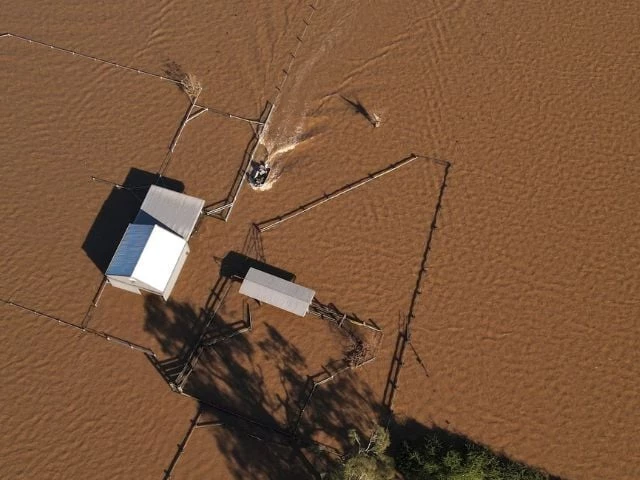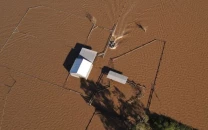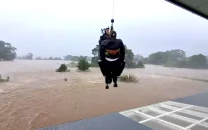Australian authorities airdrop supplies to NSW farmers stranded by floods
Floods kill five, isolate tens of thousands in country's southeast as livestock swept away, homes destroyed

Helicopters were being used on Sunday to drop animal feed to farmers in Australia's New South Wales state stranded by floods that have killed five and isolated tens of thousands in the country's southeast.
Recovery is underway in the mid-north coast region of Australia's most populous state after days of flooding cut off towns, swept away livestock and destroyed homes.
At least 10,000 properties may have been damaged in the floods, which were sparked by days of incessant rain, authorities estimate.
About 32,000 residents remained isolated due to floodwaters, which were slowly starting to recede, the state's Emergency Services posted on the X platform.
#FLOOD #RESCUE while the weather has improves we are still locating people, providing supplies and working with @NSWSES and others to assist impacted communities. #staysafe ⚠️ #lifesaverhelo pic.twitter.com/a0fx5MIIm1
— Westpac Life Saver Rescue Helicopters (@Lifesaverhelo) May 25, 2025
"The New South Wales government is providing emergency fodder, veterinary care, management advice and aerial support for isolated stock," state Agriculture Minister Tara Moriarty said in a statement.
It said 43 helicopter drops and around 130 drops by other means had provided "isolated farmers with emergency fodder for their stranded livestock".
At their peak, the floods isolated around 50,000 people, submerging intersections and street signs in mid-north coast towns and covering cars up to their windshields, after fast-rising waters burst river banks.
Five deaths have been linked to the floods, the latest a man in his 80s whose body was found at a flooded property about 50 km (30 miles) from Taree, one of the worst-hit towns, police said.
Taree sits along the Manning River more than 300 km (190 miles) north of state capital Sydney.
Prime Minister Anthony Albanese said on Saturday that conditions remained critical in flood-affected regions of New South Wales, as clean-up efforts began.
Australia has been hit with increasing extreme weather events that some experts say are the result of climate change. After droughts and devastating bushfires at the end of last decade, frequent floods have

























COMMENTS
Comments are moderated and generally will be posted if they are on-topic and not abusive.
For more information, please see our Comments FAQ